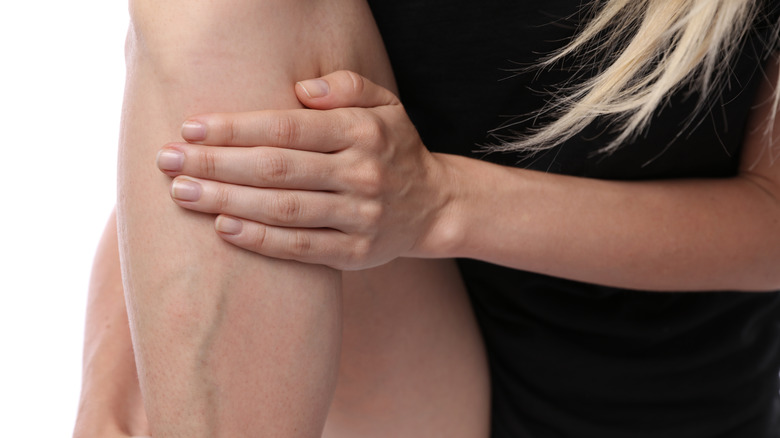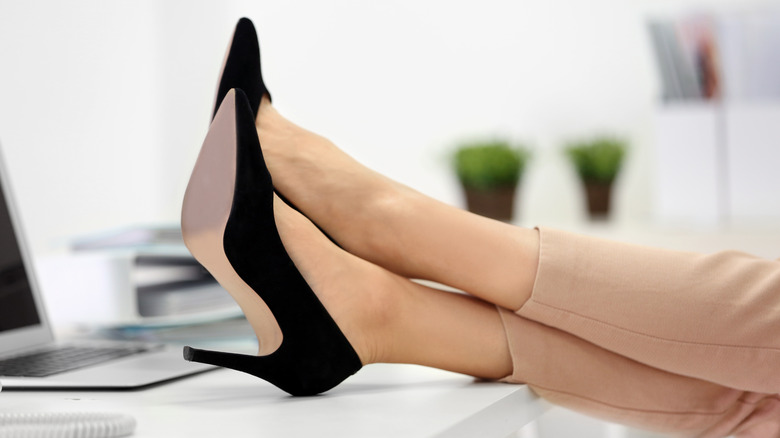What You Should Know About Varicose Veins
Varicose veins are so common that we probably either have them, or we know someone who does. About 40 million adults in the U.S. have varicose veins, including over 40% of women over the age of 50 (via Chicago Vein Institute). For many, symptoms are mild and cosmetic and require no treatment. But for some, varicose veins are not only aesthetically annoying, but can also cause aches and pains that can be debilitating.
The body's intricate system of arteries and veins operates in one direction and one direction only: forward. Oxygenated blood flows from the heart out to the extremities, and then towards the heart again for refueling. Veins have valves which act like little trap doors, making sure that once blood passes through, it can't go backwards (via Allure).
But with varicose veins, that is exactly what happens. George Skandamis, a board-certified dermatologist in Ohio tells Allure, "When the vein is overworked from having to push blood up the body against gravity, the valves seals become leaky and blood is allowed to go backward, leading to the vein becoming enlarged." As the blood leaks backwards past the damaged valves, it pools, creating those raised, twisted, bluish-purple networks that become visible on the surface of the skin.
Elevating the legs throughout the day can help
As veins work to return blood to the heart, they work against gravity. This explains why varicose veins are commonly found on the lower legs – the area farthest from the heart. Board-certified dermatologist, Danny Del Campo explains, "As gravity pulls everything down, veins tend to accumulate blood and it becomes harder for blood to travel upwards back towards the heart. As time goes on, this backup of pressure leads to collapse of valves in the veins," he states (via Allure).
Varicose veins aren't inevitable, but there are risk factors that increase our chances of getting them. Pregnancy, hormone-based contraceptives, menopause, obesity, and standing for long periods of time can all contribute to the development of varicose veins. The natural aging process, as well as genetic factors, also play an important role as to whether or not we may be more prone to the condition (via HealthyWomen).
For mild cases, there are several home remedies that may provide some relief. Exercise, elevating the legs throughout the day, and wearing compression stockings can all help. For more serious cases, there are a variety of treatments available including laser and surgical options that your doctor might recommend.


